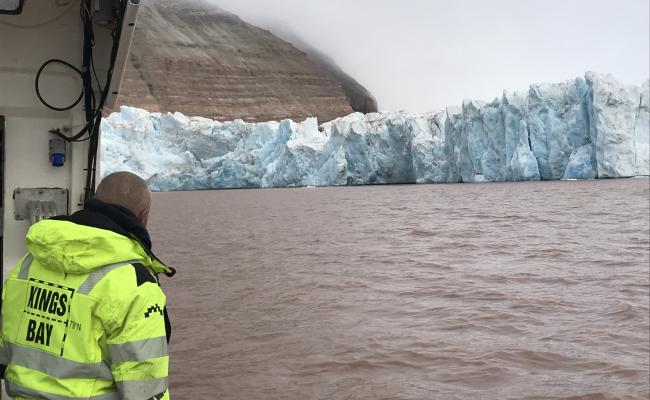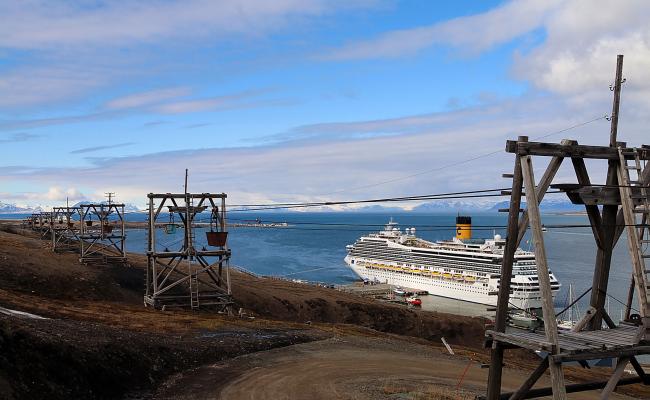Op-ed: Implementing the Sustainable Development Goals in Svalbard – More Work is Needed in The Tourism Sector

MS Spitsbergen in Svalbard. (Foto: Alex Berger under CC BY-NC 2.0)
The opinions expressed here belongs to the author and do not represent the views of High North News.
In response to rapid climatic and environmental changes, sustainability has become an important topic for the tourism sector in Svalbard.
Yet, there is room for tourism operators to engage further with the sustainable development goals (SDG) framework. This is reported in a recent research article conducted by Nordland Research Institute (Nordlandsforskning).
Longyearbyen has since 2016 been labelled “Sustainable Destination” according to a set of indicators designed by Innovation Norway.
Moreover, several tourism companies operating on the archipelago have developed quite advanced strategies on sustainability by focusing on some of the sustainable development goals (SDGs) such as preserving ecosystems, reducing energy use and favoring inclusion.
Our study shows that such a selective approach does not lead to an effective integration of the whole SDG framework in their operations and management practices.
Preserve the environment in a fairer world.
In 2015, the United Nations adopted a framework encompassing 17 SDGs and 169 specific targets.
They address economic, social and environmental dimensions of sustainability to ensure economic resilience, support social inclusion and preserve the environment in a fairer world.
Many scholars and policy experts emphasize the complexity, imperfections and inherent conflicts of these goals, and that their operationalization is challenging.
Yet, the SDGs have become a well-established backbone worldwide for addressing sustainability in various sectors and are now integrated in policies and strategies at different governance levels.
Nearly 62,000 people visited Svalbard in 2023, reaching this high Arctic archipelago under Norwegian sovereignty by either ship or plane.
Also read (the text continues)
With its pristine wilderness, in addition to the well-documented and dramatic impact of climate change, Svalbard has become a renowned destination.
Throughout the entire year, the tourists arriving in Longyearbyen are offered a large variety of activities, including dog sledding, tours with expedition cruise ships, guided bike tours, snow scooter trips, and sail and ski packages to name a few examples.
Therefore, development of the tourism sector is not only affecting Longyearbyen, as tourism companies developed products that bring visitors all over the archipelago.
As emphasized in its last white paper on Svalbard (2023-2024), the Norwegian government acknowledges the importance of tourism for the local community of Longyearbyen, with the closing of coal mining activities.
In the context of geopolitical concerns affecting the Arctic, tourism is also considered a relevant activity for maintaining a Norwegian presence on the archipelago.
Climatic changes affect the Arctic at a rate exceeding the global average
This comes with complex challenges, including a greater focus on sustainability in tourism.
Rapid climatic changes affect the Arctic at a rate exceeding the global average, and they are directly posing a threat to the tourism sector that is dependent on a changing and vulnerable natural environment for its activities.
Changes in weather conditions, sea ice retreat, erosion and thawing permafrost are increasingly requiring adaptation. Reduction in greenhouse gas emissions to mitigate climate change is more urgent than ever.
Still, tourism in Svalbard remains a carbon intensive sector as it inevitably relies on burning fossil fuels to reach the archipelago.
A review of all the 169 SDG targets shows that 42 of these are relevant for the tourism industry in Svalbard. They address the three main pillars of sustainability, environmental, economic and social aspects.
Also read (the text continues):
A thorough analysis of these targets combined with a comparison of the actions taken by Svalbard tourism operators shows that there is room for improving work on sustainability in the sector.
Sustainability strategies may include greater attention to social aspects such as social dumping, housing and work conditions for the employees.
Moreover, coordination across sectors on addressing and implementing complex SDG targets would be beneficial. Restoration of ecosystems, careful resource management and ensuring that development is not at the expense of environmental protection are good examples.
Many tourism operators in Svalbard are concerned with the ongoing climatic and environmental changes affecting the archipelago, which motivates them to focus on more sustainable practices and activities.
Although complex to operationalize, the SDGs provide a useful framework to continue working with sustainability. Yet, the context of Svalbard – and the Arctic in general – also needs to be considered.
By identifying gaps in existing strategies of the tourism operators in Svalbard, we can emphasize the sustainability topics that particularly need to be addressed to advance sustainable practices in the sector and guide the future of the archipelago.
This could also be encouraged by designing specific SDGs that are directly tailored to arctic socio-ecological condition.
The findings presented here are from a recently published study conducted by Nordland Research Institute through the BalancingAct collaborative research project, funded by the Research Council of Norway.






